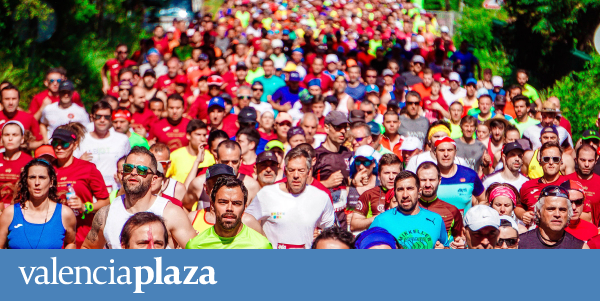Valencia. On the occasion of International Pistachio Day, next Sunday, February 26, and within the framework of the conference “Oxidative Stress and Exercise: Foods Rich in Antioxidants to Neutralize Free Radicals” Dr. Neves Palacios (Head of the Department of Medicine, Endocrinology and Nutrition) from the Sports Medicine Center) indicates the possibility that the accumulation of free radicals during Intense physical exercise leads to inflammatory diseases of the muscles, bones, or even the liver. At the same time, he increased the need to mitigate this vigorous physical exertion by eating products with high antioxidant capacity such as pistachios.
The upward trend in endurance and long-distance races, which contrasts with the middle-distance races that have accumulated years of decline in the number of participants in our country, shows that more and more people are participating in ultra-marathon courses and intense physical exercise. However, is aggravating exercise as healthy as it sounds? This is the question posed by Dr. Palacios, who suggests the need to rethink the intensity of sport and physical exercise based on variables such as age, duration and intensity of exercise, nutritional status, physical condition, and training of the athlete.
For Dr. Palacios, “Physical exercise performed at light or moderate intensity stimulates the activity of antioxidant enzymes, which can be seen as a defense mechanism for cells against oxidative stress. However, free radicals can impair athletic performance if exercise is intense; and antioxidants may inhibit Harm from strenuous exercise.”
Muscle and particle damage
Thus, Dr. Nieves Palacios points out, “Strenuous physical exercise causes muscle damage and overtraining leads to a state of oxidative stress. Athletes who undergo continually grueling physical training for years accumulate molecular damage products, especially in muscle, bone, cartilage, and liver, and display a state of generalized inflammation. “.
According to the doctor, “Very intense exercise is associated with transient hypoxia of tissues in various organs. Skeletal muscle cells can become over-oxidized causing fatigue and muscle damage after exercise. However, in small amounts it can be beneficial as an adaptive aid during low exercise.” density regularly.
Oxidative stress and physical training
“During physical exercise, oxidative stress increases due to increased oxygen consumption, which leads to increased production of free radicals. This situation can lead to muscle and liver damage, fatigue and decreased athletic performance,” says Dr. Palacios. He adds, “However, free radicals are essential for the body to function properly because they act as messengers within cells (a wake-up signal) and help adapt to exercise.”
What are free radicals and antioxidants?
Free radicals are atoms with an odd number of electrons or with one free electron. They can alter DNA, break cell membranes, disrupt enzymes, and so on. For their part, antioxidants are compounds that interact with free radicals and neutralize them, preventing them from causing damage. Thus, an imbalance in our cells due to excessive production of RL and/or decreased antioxidants can lead to a state of oxidative stress with negative effects on health.
How do we fight free radicals?
The human body contains endogenous antioxidants, which are produced by the body itself to repair free radicals; and, extrinsic, which are those provided by food. With intense physical exercise, more oxygen enters the body, which generates more oxidative stress. In this scenario, endogenous antioxidants are the first line of defense; While the external constitutes the second.
Athletes and people who exercise regularly are advised to eat a diet rich in fruits, vegetables, seeds and nuts to ensure proper intake of antioxidants. Among them are pistachios, blueberries, cherries, broccoli or pumpkin. According to a research conducted by Dr. Rui Hai Liu at Cornell University, pistachios have a high antioxidant capacity and thanks to their healthy food properties that are rich in unsaturated fats, cholesterol-free, minerals and vitamins, they are usually a very enjoyable food. Diet for any athlete.
A serving of 49 pistachios, equivalent to about 30 g, contains 160 calories and a large amount of healthy nutrients: 3 g of fiber, 6 g of protein, monounsaturated and polyunsaturated fats, good for the heart. phytosterols, which help reduce intestinal absorption of cholesterol ingested with other foods; 8% of the recommended daily value for potassium; other minerals such as iron, calcium, phosphorus or magnesium; vitamins of group B and vitamin E; and antioxidants.

“Beeraholic. Friend of animals everywhere. Evil web scholar. Zombie maven.”

/cloudfront-us-east-1.images.arcpublishing.com/eluniverso/YFBMOB6RIFBJ7EVX7F4FOQMQPA.jpg)

:quality(85)/cloudfront-us-east-1.images.arcpublishing.com/infobae/YB64VL2YN5E5BFTHJIG4M7QUUE.jpg)



More Stories
“It has not been scientifically proven to work,” says climate specialist about cloud “bombing.” Ecuador | News
SSM will perform free mammograms in 5 municipalities in the state of Michoacán
NASA is studying planet K2-18 b again to confirm the presence of gas “produced only by life” | Canaryasenred